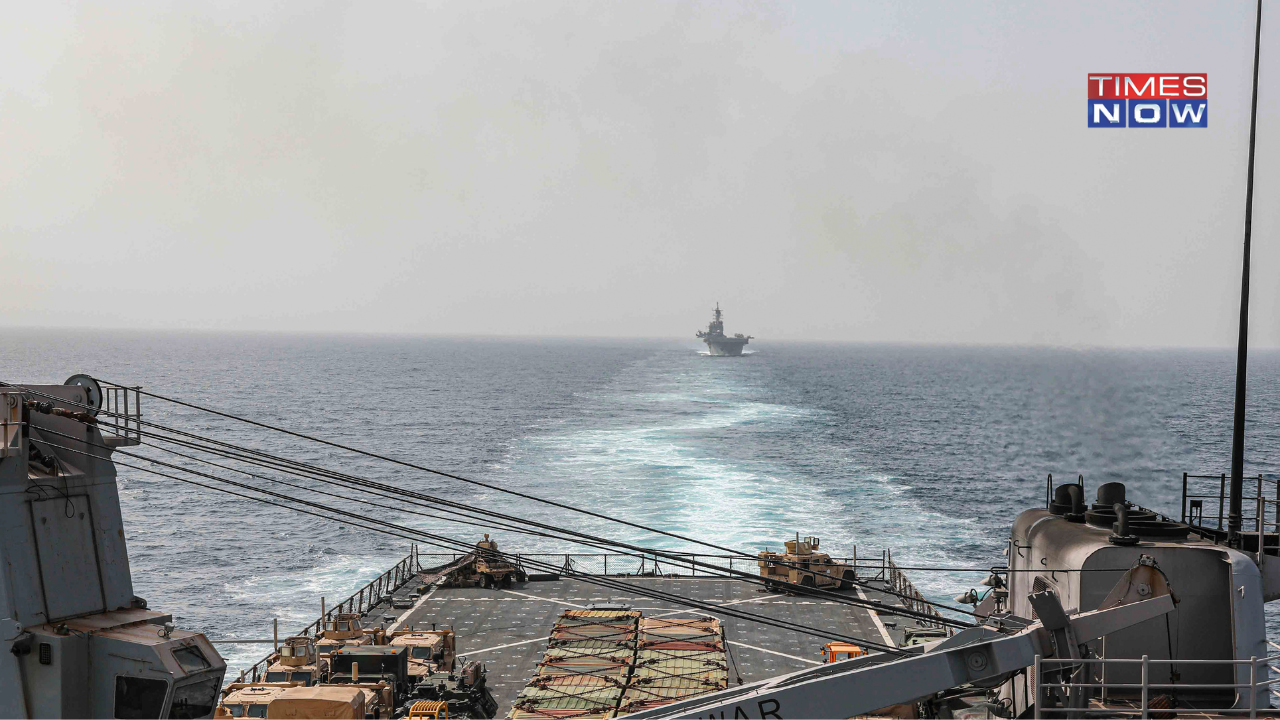Amid Red Sea Crisis, India and Russia Turn To Northern Sea Route
Amid the uncertainty in sea routes in the Suez area, the Red Sea and the memory of the pandemic are making the Northern Sea Route an increasingly important option. India and Russia are in discussions regarding forming a joint working group to oversee trade from the Northern Sea Route.

Amid Red Sea Crisis, India and Russia Turn To Northern Sea Route
Photo : AP
New Delhi: India and Russia are in discussions regarding the formation of a Joint Working Group on the Arctic region, particularly the Northern Sea Route. The proposal, from Russia, is being actively considered by India and the details are being worked out.
This Joint Working Group will likely include representatives from the Ministry of External Affairs and the Petroleum, Earth Sciences, and Transportation ministries.
Speaking to TIMES NOW, Vladimir Panov’s special representative for Arctic Development of Rosatom and a former mayor, said the uncertainty in sea routes in the Suez area, the Red Sea and the memory of the pandemic is making the Northern Sea Route an increasingly important option. This is particularly important for countries like India and also, Indonesia and The Philippines. Together, they have a population that is double China’s. This will be a great help in the transportation of goods from Russian ports in the north, like Murmansk, to the Indo-Pacific.
Panov also spoke about the increase in the number of icebreakers, including nuclear-powered ones to 14 by 2030. This would help to ensure that the route is open throughout the year, including in the winter. Also, the number of ships using the Northern Sea Route and the amount of goods moved in tons is increasing every year, another sign of the NSR’s feasibility.
India stands to gain from the NSR— there is already a Chennai- Vladivostok line both countries have worked on. India’s interest in the NSR and the region itself will relate to issues like trade and commerce, the environment, science and technology and access to minerals.
Trending:
End of Article
Subscribe to our daily Newsletter!
Related News





Lok Sabha Elections 2024 Highlights: On Tejashwi Yadav's 'BJP In Depression' Remark, Saffron Party's Prediction For RJD

'Rule Of Kings And Maharajas...': Rahul Gandhi's Remark Stirs New Controversy

'Asli Masale Sach Sach': MDH On 'Pesticides In Spices' Allegations By Hong Kong, Singapore

Where's Raghav Chadha? AAP MP's London Trip Amid Kejriwal Arrest Spurs Speculation

Hassan Sex Video Scandal: Siddaramaiah Govt To Set Up SIT After Women Commission Complaint








